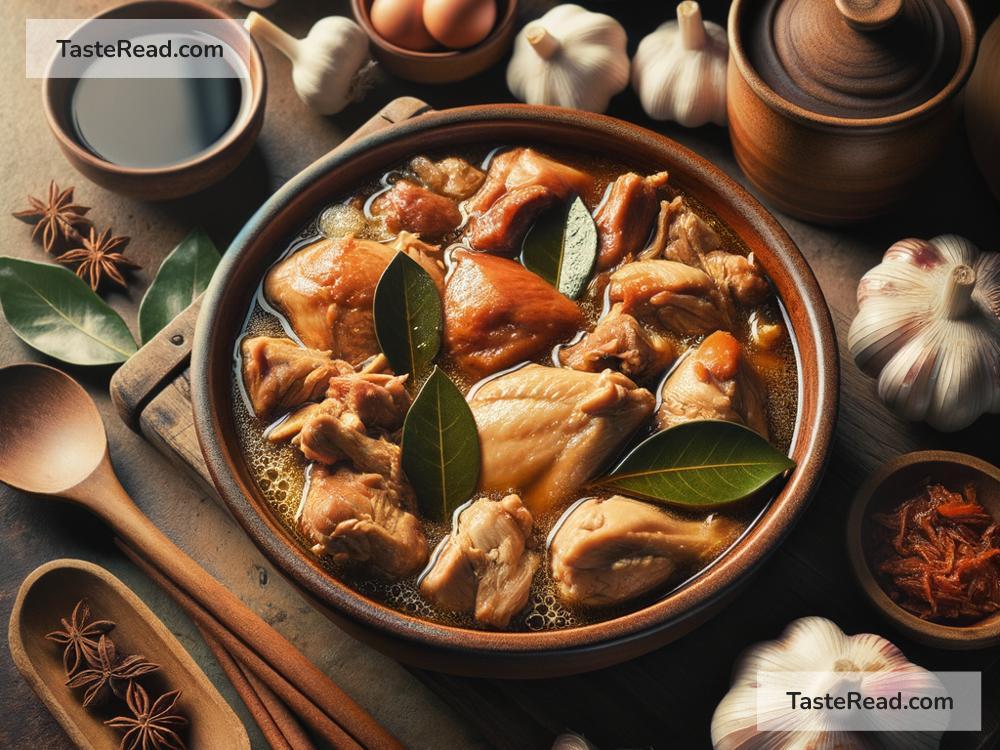The Rise of Filipino Adobo as a National Dish: A Delicious Tale
In the Philippines, a country blessed with a diverse culinary landscape, one dish rises above the rest in terms of recognition and popularity. Adobo, a savory and occasionally tangy stew, has woven itself deeply into the fabric of Filipino culture and cuisine. But how did this humble dish elevate itself to the status of a national dish? The journey of adobo from a simple method of preservation to becoming a symbol of Filipino identity is a story worth savoring.
The Origins of Adobo
The story of adobo begins long before the Spanish set foot on Philippine shores. The indigenous peoples of the Philippine islands had already been practicing a method of preserving food using vinegar and salt. This technique allowed them to extend the shelf life of their food in the tropical climate. It was this indigenous method of preservation that the Spanish, upon their arrival in the 16th century, identified as something familiar, likening it to their own culinary practice of adobado.
Yet, the Filipino adobo is much more than a method of preservation. Over the centuries, it has evolved, absorbing influences from various cultures that have interacted with the Philippine archipelago. The Spanish brought with them their cooking techniques and ingredients such as garlic and bay leaves, which have become integral to adobo’s flavor profile. The Chinese introduced soy sauce, adding depth and color to the dish. Despite these influences, adobo remains distinctly Filipino, adaptable and varying from region to region, family to family.
The Evolution of Adobo
What makes adobo truly fascinating is its incredible versatility. There isn’t one definitive recipe for adobo; instead, it reflects the diversity of the Philippine archipelago itself. Each region, and indeed each household, boasts its own version of adobo. The basic ingredients — vinegar, soy sauce, garlic, bay leaves, and black pepper — remain constant, but the ratios and additional components can vary widely.
In some areas, coconut milk is added to create a rich, creamy sauce, while in others, a splash of pineapple juice introduces a hint of sweetness that contrasts beautifully with the savory base. Some cook adobo until the meat is fall-apart tender in a stew-like consistency, while others reduce it until the sauce thickens and coats the meat in a flavorful glaze. Pork and chicken are the most common proteins used, but adobo can also be made with beef, seafood, or even vegetables for a vegetarian twist.
Becoming a Symbol of Filipino Identity
Adobo’s ascent to the status of a national dish is a testament to its deep-rootedness in Filipino culture and history. It is more than just a culinary staple; it is a symbol of survival, adaptation, and resilience. The same preservation technique that allowed early Filipinos to store their food also enabled them to endure the long voyages during the galleon trade era.
Moreover, adobo is a dish that transcends social and economic boundaries. It is enjoyed by people from all walks of life, offering comfort and a taste of home. Its simplicity and flexibility mean that it can be easily prepared with ingredients found in any kitchen, making it accessible to all.
In a country that values community and family above all, adobo plays a central role in gatherings and celebrations. It is a dish that brings people together, served with steaming rice during simple family dinners and grand fiestas alike. Each serving of adobo is a reflection of the person who prepared it, their history, and their love for those who will share in the meal.
Adobo in the Global Culinary Scene
As Filipinos have migrated and settled in different parts of the world, they have brought adobo with them, introducing it to a global audience. It has been featured in international culinary shows, restaurants, and food festivals, showcasing Philippine cuisine to the world. Adobo’s versatility makes it adaptable to different palates, allowing it to gain popularity beyond the shores of the Philippines.
Adobo’s story is a rich tapestry woven from history, culture, and countless individual experiences. From its humble beginnings as a practical method of preserving food, it has grown to become a symbol of Filipino identity and pride. In every simmering pot of adobo is a reflection of the Philippine archipelago’s diversity, resilience, and the warm, welcoming spirit of its people. As the flavors of adobo continue to evolve, so too does its legacy as a dish that is quintessentially Filipino, binding the past with the present and carrying it forward into the future.


